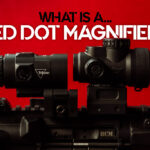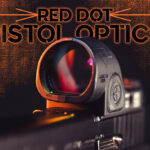

Choosing sights for your new rifle is one of the “joys” of fitting out a new firearm or simply dressing out an old one. With all the choices we have on the market these days, it is easy to get overwhelmed. Or, put it another way, it is easy to get carried away. Before entertaining different brands for reputation and recognition, the sheer variety of different rifle optics available encourage an inevitable wave of trial and error.
When it comes to setting up a rifle, especially a tactical platform like the AR-15 the possibilities are seemingly endless. Purchases can lead to a box or two of unused accessories sitting next to the gun locker. The tragedy of that becomes all the more palpable when one considers that all that value could have been put towards ammo. Or, another gun.
Therefore, it is not unreasonable to give a moment’s pause and consider what purpose the firearm in question will serve. Will it be for close quarters rapid engagement exercises or will it be for prone precision shooting? Certainly, many a “Tactical Timmy” realized a full-length rail offers the possibility for mounting both and at the same time. However, this makes the rifle heavy and unwieldy, potentially getting both it and its owner mocked.
When it comes to getting the job done, choosing the right tool makes a big difference. Of course, having options available is wise, but not at the expense of hindering function.
What follows is a selection of common rifle optics systems available on the market. There’s also a brief explanation to help you when shopping. Have fun and find something new and/or different for your new and/or old treasured tool.
Iron Sights

Should iron sights be mandatory on your rifle? We think so, don’t leave home without them!
Remember what we wrote above about choosing only one system? Good, now forget it. Having a set of flip-up iron sights as backups is not only sensible, it is almost mandatory. You’ll most commonly see these on rifles in military/CMP style matches, they are the traditional mainstay of riflery. Iron sights are Old Reliable: no batteries, no fogging, and [mostly] no knocking off zero by general handling and use. Sure, they may be kind of boring, but they are simple and constant. In any scenario, but especially stressful scenarios, keeping it simple is the way to go.
To that end adjusting iron sights is often the biggest complaint: there is no arrow that saws “this way.” A simple axiom to remember is this: front sights follow, rear sights run away. Meaning if shots are hitting right, the front sight (if it has windage adjustments) moves to the right (follows the hits). Otherwise, the rear sight adjusts to the left (runs away from the hit). Works the same way for elevation: if shots are hitting low, raise the rear sight or lower the front sight.
Red Dot

Red dot optics like the Trijicon MRO have extremely long battery life and a rugged build.
Competitors use these sights for matches that require quick, reactive shots. Think tactical weapons or rifles that are used for “running and gunning.” They provide an easy, and admittedly fun, sight picture. They are also available not only in red, but also green and blue, for various environmental lighting conditions. Typically, they are a little on the small side, not always offering a wide field of view. Having an unobstructed line of sight to the front sight, if there is one, is ideal for close to medium range engagement.
For long-range, precision shooting, the dot tends to be larger than the target. You can compensate for this by reducing the power of the dot. A less intense projection will provide less radiance and not eclipse the bullseye, so they are not useless. However, in a fast-paced exercise or situation, accuracy or timing will suffer while adjusting the rheostat. An undeniable advantage of RGB (red, green, or blue) dot systems is that their LED light is very low voltage and has very impressive battery life.
Holographic Sights

Holographic optics use a mirror to reflect the reticle image without using the front glass of the sight.
If we gave rifle optics awards for being complex, holographic sights would have a case full of trophies. These sights are generally rugged in build quality and made to withstand a variety of environmental elements. They tend to be more on the expensive side when compared to red dots, or reflex sights. However, their proven reliability, and ability to take a severe beating make them a popular choice for military and law enforcement.
What about compared to a red dot? A red dot optic functions by projecting an LED towards a coated lens so that it reflects the dot back to the viewer’s eye. As we noted, holographic sights are different than red dots. They use a holographic laser transmission, generally in the shape of a reticle, to reflect the image via a mirror, in front of the viewer’s eye. Generally speaking, holographic sights project the reticle/dot outwards towards the target, while red dots reflect inward toward the viewer.
Reflex Sights
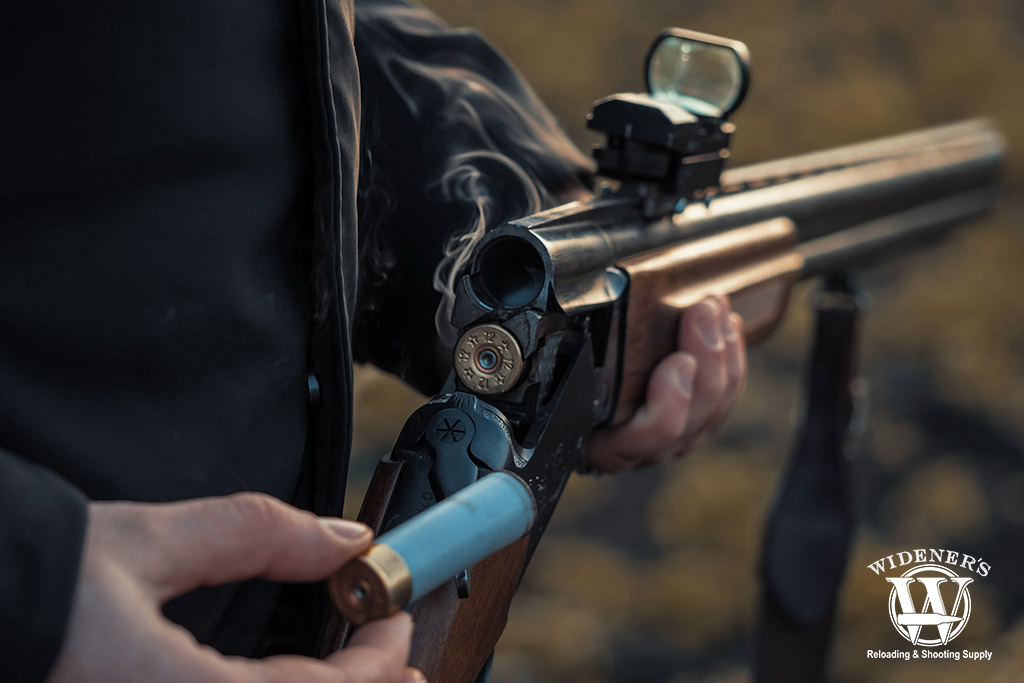
Reflex sights offer a wide field of view allowing for quick target acquisition with your rifle (or shotgun).
Like the RGB, reflex sights are for use on the move and putting out rapid shots at close range. Reflective, or reflex sights work similarly to a red dot but often provide a reticle instead of a simple dot. They offer a wider field of view because they are projected onto a larger screen with less bulk around it. Aircraft and anti-aircraft gun sights originall used them as a Heads Up Display (HUD). Engineers made them specifically so you can acquire a fast-moving target quickly.
Reflex sights generally have smaller sides and tops, which is how they do not block the shooter’s field of vision as RGB sights can. They are ideal for both eyes open engagement so the shooter does not become target fixated and ignore changes to his or her surroundings. Ideal for close to medium range, again like the red dot, the illumination tends to cover up smaller, more distant targets. Another plus to this style of rifle optics is that they have less to obstruct any backup iron sights: a benefit for when the battery dies and “Old Reliable” needs to be deployed.
Lasers

No, it’s not for entertaining your cats. A laser system can help you with aiming in unexpected situations.
Throw on a Pink Floyd album, fire up the smoke machine, and have some fun. Although sometimes used for competitive speed competitions, lasers are great for use on a personal defense firearm that may be shot from the hip or otherwise not traditionally aimed. For fast, close quarters, reactive shots they really shave off reaction time to get shots accurately on target. For long-range aimed shots, especially without support, they often leave the shooter wondering about their caffeine intake and/or an urge to get checked out for Parkinson’s: the further out the target, the more that laser dot will dance around and attract attention-deficit cats.
Additionally, lasers work both ways. If the target becomes aware of it, they can realize what is going on and trace it back. Sniping and antisocial considerations aside, lasers for close quarters, personal defense scenarios may offer a small benefit. Seeing a laser may cause the antagonist to reconsider options and retreat without pressing the issue. This is NOT a popular or recommended utilization of lasers. A firearm should never be used to “one up” a situation, only end it. All those stories of guns being used on their owners are because the owner hesitated and lost it in a struggle. Lasers are a sighting tool, not a dare, use them appropriately.
Rifle Optics: Fixed Magnification
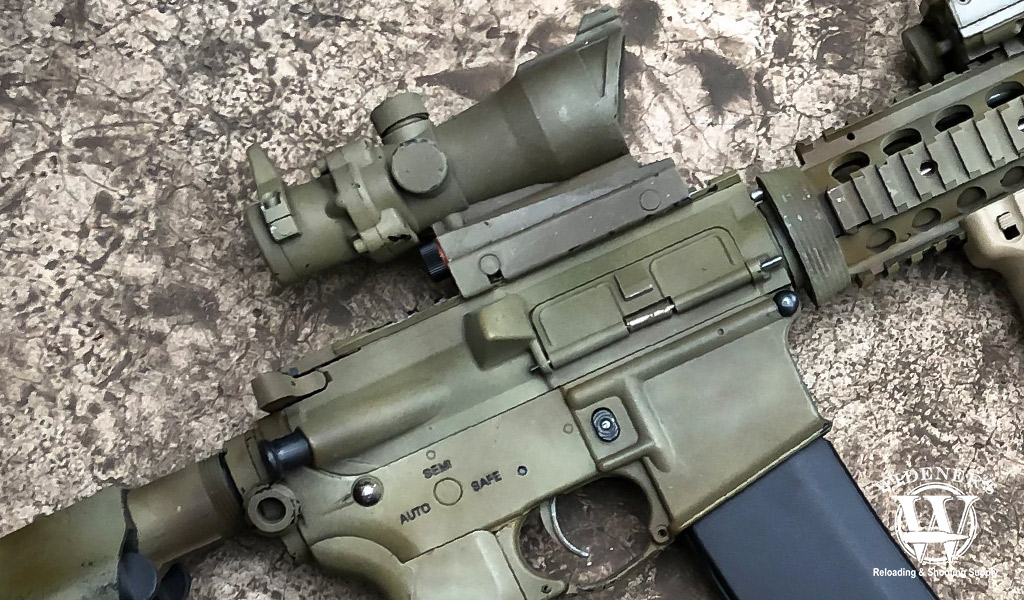
The ACOG is a popular fixed magnification optic commonly used by military and law enforcement.
Good for competition or hunting, scopes with fixed magnification are almost always minimal power. A 2X or 4X power is common, something that offers a little clarity without completely obscuring the surroundings. Consequently, they are ideal for medium-range shooting without being a detriment to close in and offering a little advantage for further out.
They will hinder the use of iron sights but this is only an issue if the reticle is battery powered. In that case, it should be mounted either on raised rings that allow the iron sights to be seen under, or on a side or swing mount or at the very least a quick-detach (QD) mount. If the reticle is non-electronic, there is no reason to worry (unless of course the scope is broken somehow in an unlikely scenario). Yep, better still put on a set of backup irons sights, just in case.
As stated, magnification will remain towards the lower end because anything with too much magnification negatively affects close-up shots. Anything too low magnification raises the question of why bother. Fixed magnification scopes offer simplicity: knowing the power and capabilities and just use the scope as trained without messing with the settings. A scope with a bullet drop compensator (BDC) reticle is of course, a very good idea.
Rifle Optics: Variable Power
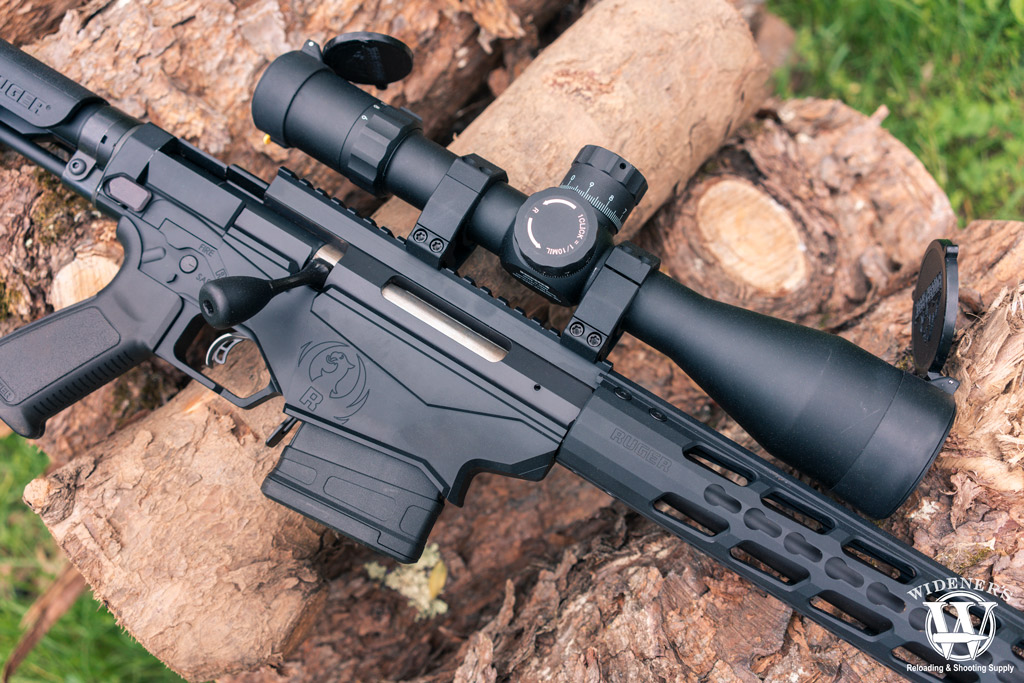
Variable power rifle optics allow the user to zoom in for target inspection and identification.
We use these more for stationary or prone shooting: target and tactical covering shooting. Variable power scopes share one commonality: they make a BDC reticle somewhat useless. The variability allows shooters to zoom in for inspection and then back out to where the reticle is a known variable. Such adjusting of course takes the attention of the shooter off the target and takes time.
Low power scopes are ideal for close-range while high power, of course, is better for further out. Low power is easier to use at longer ranges, while the high power magnification definitely lends itself to target fixation and less awareness of the immediate surroundings. So again, the question comes back to the intended purpose of the rifle. Will you use it for precision shots or for tactical applications?
An important differentiator between high and low power scopes is size and weight. Requiring more glass for high power will likely be more expensive and heavier. Extra weight makes high power less attractive to “running and gunning.” However, less weight for low power means less inertia and less risk of internal damage. The utilization of those scopes makes the rifle less versatile to changing situations while making it better at a specific task: hitting things further on out.
Options For Rifle Optics
When considering options, remember, you’ll use rifle optics for one of two applications: tactical and precision. Trying to do both tends to lead to a too heavy or too bulky weapon as referenced above. Tactical requires fast, accurate shots for immediate, or close threats. Precision allows a few moments of preparation and calculation. Allowing you to make a single shot, or series of shots on target(s) not actively closing the distance. Decide what the firearm’s purpose is. After that decision is made, the rest is easy.


